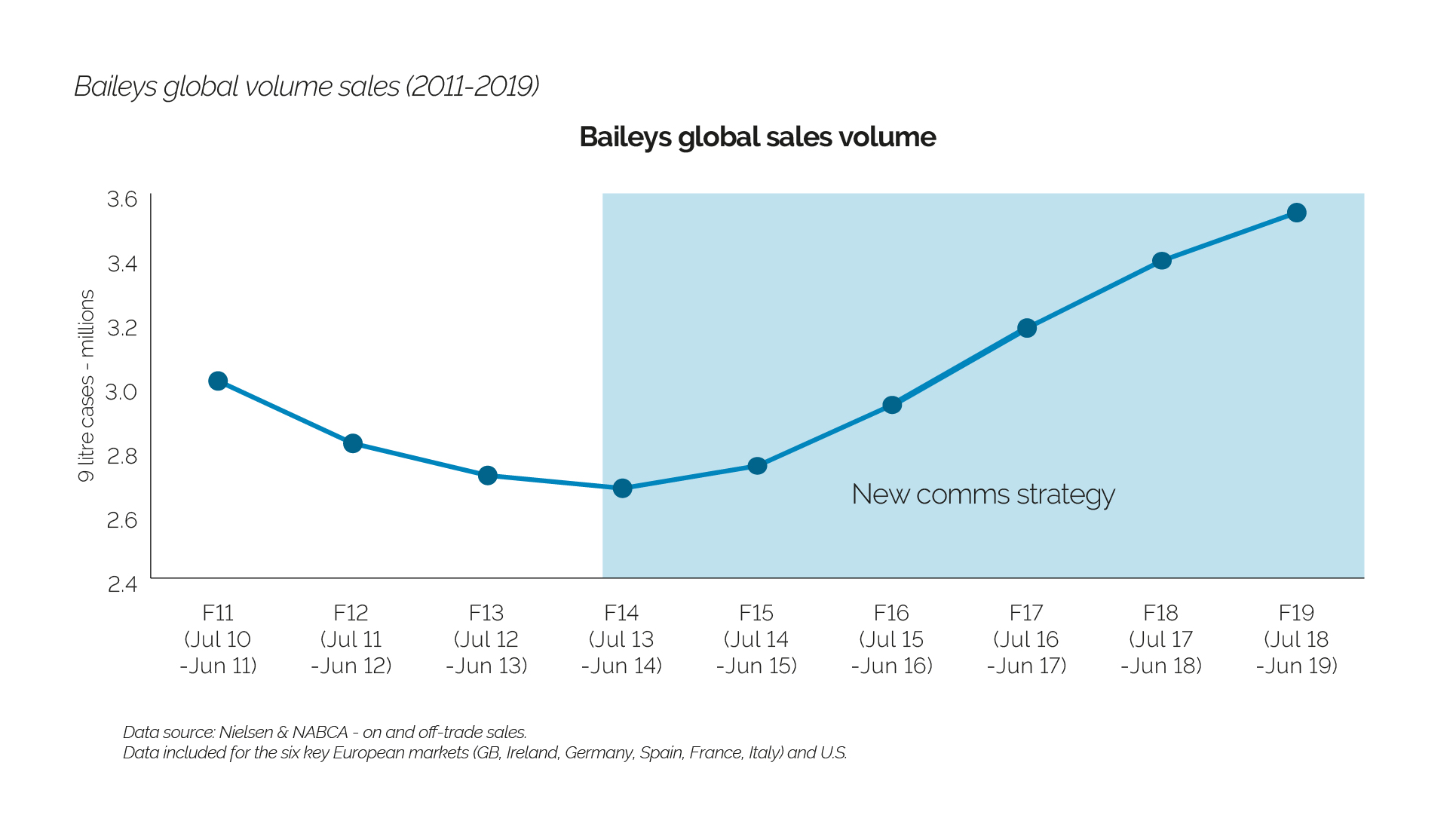If you think of an IPA Effectiveness Awards entry as a piece of advertising about your own work, then your best chart is like the end line. It is the element that summarises your case in one image designed to burn itself into the judges’ memory as they sift through rival Awards entries. Ensuring that your entry has at least one such chart is well worth the effort.
Fortunately, there are past IPA Effectiveness Awards winners to guide you. Here are five examples and why they stood out.
1. Demonstrate the difference your communications made
From Volvo, UK: A defiantly Human success story (IPA Silver, 2020)

To evolve its brand positioning from a traditional focus on car safety to purposeful innovation, Volvo UK developed a series of short documentaries about path-breaking individuals (called ‘Human-Made Stories’) together with sponsorship credits to be aired on the Sky Atlantic TV channel.
The case study chart above impresses because it clearly marks new Volvo UK registrations rose in phase with the start of the ‘Human-Made Stories’ campaign and steadily grew.
This trajectory is doubly persuasive because it compares favourably with both the performance of Volvo in other European markets, which did not air the same material, and with modelled predictions of the new cars Volvo would have sold in the UK without this communications.
2. Show your strategy became more effective over time
From Baileys, Global: From forgotten icon to global treat (IPA Silver, 2020)

Baileys cream liqueur was losing relevance and sales volumes until the global ‘Don’t Mind if I Baileys’ strategy re-framed the drink as an ingredient in indulgent treats for adults.
The above chart shows how the turn-around in sales volumes in the brand’s international markets matches the timing of the start of the new strategy. This upswing accelerated as Baileys added new executions and optimised its media and creative implementation, learning the lessons of what worked.
3. Quantify the value of long-term brand investment
From Specsavers, UK: Should have gone to Specsavers, (IPA Gold, 2014)

For an even longer-term demonstration of how investing in communications can pay back, see this example from Specsavers, the optical retailer.
This 2014 case argued that the brand’s dominant share of voice and consistent presence in its market were used to deploy humour and memorable brand assets as advertising tools to grow the brand’s revenue consistently over 30 years.
Econometric analysis identified how much of this growth could be attributed to the brand’s advertising. The resulting chart has one of the longest timespans of any case in the IPA Effectiveness Databank.
4. Directly link growth in brand building measures to stronger financial performance
From DFS, UK: Turning DFS from a value brand into a brand that people value (IPA Gold, 2018)

Sofa retailer DFS needed to attract more affluent shoppers in order to meet its growth targets. A multi-year strategy repositioned DFS to balance brand health measures such as consideration without abandoning the sales driving activations for which DFS was known.
Over six years and multiple campaigns, advertising featuring animated characters celebrated the production and quality testing of its sofas, and brand partnerships with the British Heart Foundation and Team GB sports were used to build affinity.
Increased consideration meant more people in stores and more ‘warmed-up’ leads for sales offers.
The chart above plots the relationship between annual changes in consumer consideration of DFS and increases in the retailer’s profits. The case estimated that over the total period greater consideration led to £49m more profit for DFS.
It is one of the clearest illustrations in the IPA Effectiveness Databank of the link between growing a brand measure, such as consideration, and improved financial performance.
5. Illustrate how performance improved in phase with the timing of communications
From The AA, UK: From spark plugs to singalongs (IPA Gold, 2018)

While proof that a brand’s long-term performance has rallied is always likely to impress judges, a sudden reversal of decline such as the AA demonstrated above can also be persuasive.
After a period in which the AA over-focused on activation marketing and cross-selling to its existing members, the brand shifted strategy. It re-balanced media spend towards brand marketing and invested in broad reach channels, such as TV.
The resulting campaigns quickly rebuilt salience and image, increasing both acquisition and retention of customers.
As the chart above shows, the AA’s market share went into rapid growth following the launch of its revamped brand advertising strategy.
Authors will probably need every word in the 4,000-word limit on Awards entries (4,500 words for joint entrants) to make their effectiveness case study detailed and watertight.
But it is worth remembering the power of a single image.
If the image uses credible data to show the relationship between the rollout of your communications strategy and an improvement in the brand’s performance, it can be one of the most forceful ways to cut through with the IPA Effectiveness Awards judges.
Find out more about the IPA Effectiveness Awards


